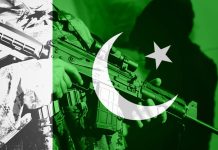The first 18 months of the Duterte government suggest that the effort to recalibrate the Philippines’ ties between the US and China is necessary, viable and vital.
In the first half of the 2010s, Manila and Beijing were drifting toward a geopolitical clash. Nevertheless, former President Benigno Aquino III expected continuity to prevail under what he presumed to be the Roxas government.
Similarly, former President Obama anticipated that Hillary Clinton would be the next US president and that she would sustain his legacy in Asia.
But as I argued in the Philippines Institute for Development Studies (PIDS) in February 2016, What if Duterte would beat Roxas and Trump would win in Washington? That, I said, would change the rules of the game.
Washington’s Retreat and Return
After World War II, Manila cultivated close relations with Washington and supported the US through the Cold War, the War on Terror and was a major non-NATO ally.
Indeed, in the postwar era, the Philippines was seen as the most likely country to prosper in the region. And yet, during the Marcos decades and the deep ties with the US, the country fell behind the rest of Asia, despite the “People Power Revolution”.
At the time, China was focussed mainly on its economic reforms and, after joining the World Trade Organization (WTO) in 2001, on its export-led growth. The latter prevailed until the global financial crisis, the Eurozone sovereign credit crisis and the rise of President Xi Jinping’s administration in the early 2010s.
Despite pledges of change, the Aquino era (2010-16) reaped only some benefits of easy catch-up growth and regional integration. Its anti-corruption struggle was not effective, the explosive drugs problem was largely neglected and poverty persisted. Worst of all, it failed to realise the economic potential of the Philippines.
Meanwhile, the Obama administration began its pivot to Asia, including the plan to move the majority of US warships to Asia Pacific by 2020. Unsurprisingly, China made its counter-moves in the region.
So President Aquino and Foreign Minister Albert del Rosario saw bilateral talks with China as futile, tried multilateral approach through the ASEAN and took the dispute to the international court, while opting for a new defence alliance with the US (2014 EDCA), which was followed by the return of the US Navy to Subic Bay.
Erosion of Manila-Beijing Ties
In Beijing, the Philippines came to be seen as US military platform in Southeast Asia, with Vietnam a complement of Japan in East Asia. Washington encouraged rearmament in all three countries. In Japan, that meant the end of the pacifist postwar constitution; in the Philippines and Vietnam, rising military expenditures. In turn, US defence contractors reaped economic rents as tensions in the South China Sea drove up demand for weapons.
According to SIPRI, the US provided 90 percent of Japan’s weapons imports in 2012-16, while the Philippines started a military expansion program and increased arms imports by 426 percent from 2007 through the Aquino era.
The militarisation benefitted the Pentagon and some of its Western allies, but led to friction with China at precisely wrong time. As the Obama administration orchestrated its military pivot to Asia, it was alienating China, which was promoting regional financing by the BRICS New Development Bank, the Asian Infrastructure Investment Bank, and the huge One Belt One Road initiative.
The net effect? When Chinese foreign investment took off hugely in Asia, Philippines was largely bypassed. Instead, as Aquino and Rosario were struggling for what they felt were Manila’s vital sovereign interests in the region, the country grew geopolitically dependent on Washington.
Four Scenarios But…
Before the 2016 Philippines election, there was real concern that the country was heading toward a confrontation with China in the South China Sea. Manila’s new defence alliance with Washington added to the distrust.
As Duterte won the election, the US Navy sent its third warship in less than seven months into the waters of the disputed South China Sea. In hindsight, such actions, which were seen as highly provocative in Beijing, probably reinforced Duterte’s determination to recalibrate ties between the US and China. But did he have any viable alternatives?
Depending on whether China and the Philippines would opt for a cooperative or assertive stance in bilateral relations, I argued that four scenarios cast a long shadow over Southeast Asia’s future at the PIDS and in the Foreign Service Institute soon after Duterte’s electoral triumph.
If Beijing refused cooperation with Manila, it would corner the Duterte government to rely even more on US security assurances. This I portrayed as a regional dead-end scenario.
Conversely, if Beijing would seek cooperation but Manila would take a back step, due to external pressure, the result would be a polarisation scenario. In that case, Manila would have to lean even more on the US, while China might resort to even greater defensive measures. Both countries would lose economically.
In the third scenario, old policies would prevail, which would ensure the failure of bilateral talks, harden attitudes and increase the probability of proxy conflicts in South China Sea. That was the destabilisation scenario – a costly nightmare economically and strategically, and possibly in human lives.
… Only One Path to the Future
The only reasonable approach, I argued then (as I did through the Aquino era), would start with a Sino-Philippines bilateral conversation that would lead to a formal dialogue. The latter could reduce the weight of geopolitics, while supporting mutual gains in economic development. This stabilisation scenario would be the most preferable economic, political and strategic trajectory for Manila, Beijing, the ASEAN and over time for Washington as well.
It is also the scenario that the Duterte government opted for, despite the alleged “Goldberg regime change plan” and the associated efforts at destabilisation in the Philippines – the last relic of the Obama pivot.
Despite occasionally tough bilateral rhetoric and disagreements, peace and stability between the US and China, along with thriving bilateral trade and investment, allows greater focus on economic development globally, particularly in broader Asia.
That’s what the Philippines needs – greater infrastructure investment for industrialisation and urbanisation, constitutional changes to ensure foreign investment increases by magnitude, sustained and inclusive economic growth, all of which should foster rising living standards and reduce poverty.
For the first time in decades, solid growth and economic catch-up may translate to substantial gains in the lives of ordinary Filipinos. Of course, the Duterte balancing act won’t be easy. But failure is not an option and the alternatives are worse.
The original commentary was published by The Manila Times on December 4, 2017
Featured Image: US President Donald Trump talks with Philippines President Rodrigo Duterte during the gala dinner marking ASEAN’s 50th anniversary in Manila, Philippines, Nov. 12, 2017.
About the Author
 Dr. Dan Steinbock is Guest Fellow of Shanghai Institutes for International Studies (SIIS), see http://en.siis.org.cn/. The commentary is part of his SIIS project “China in the Era of Economic Uncertainty and Geopolitical Risk”. For his global advisory activities and other affiliations in the US and Europe, see http://www.differencegroup.net/
Dr. Dan Steinbock is Guest Fellow of Shanghai Institutes for International Studies (SIIS), see http://en.siis.org.cn/. The commentary is part of his SIIS project “China in the Era of Economic Uncertainty and Geopolitical Risk”. For his global advisory activities and other affiliations in the US and Europe, see http://www.differencegroup.net/
































































